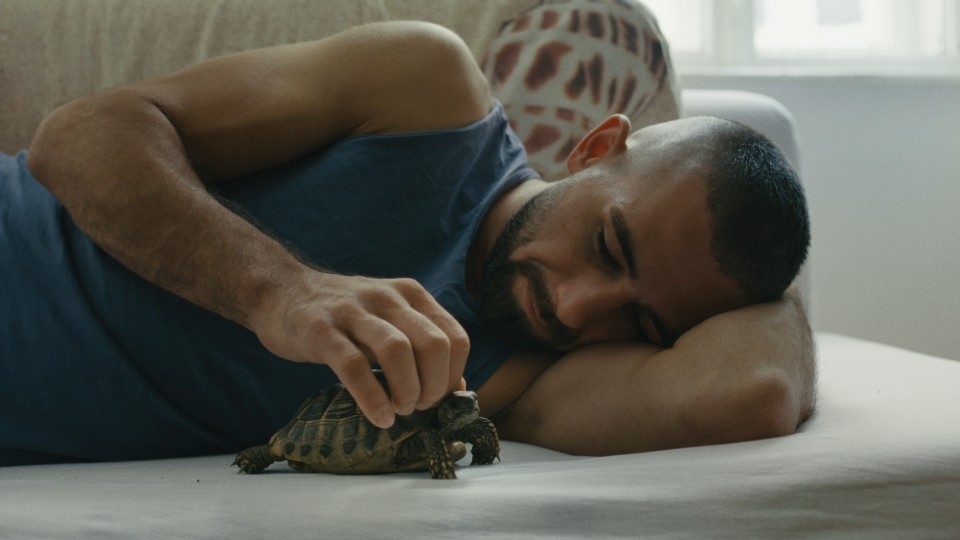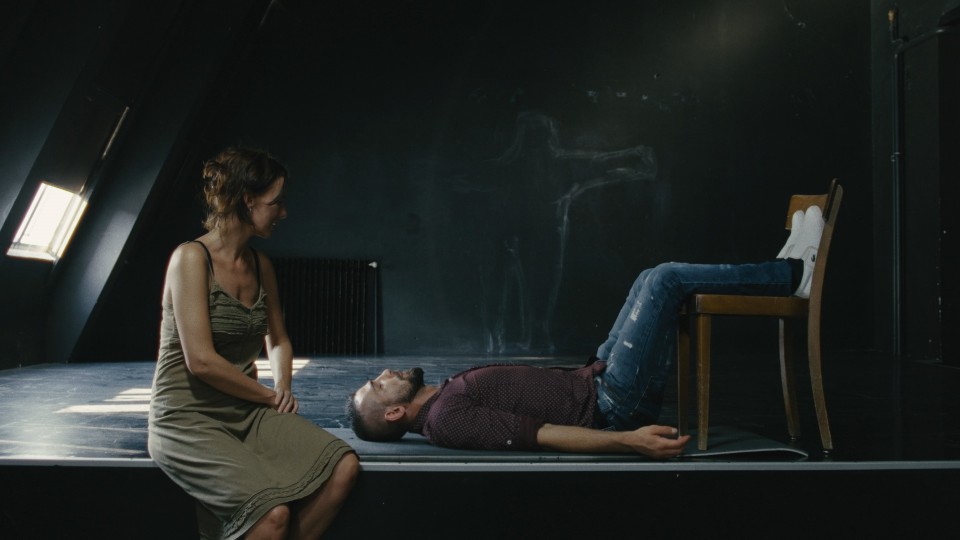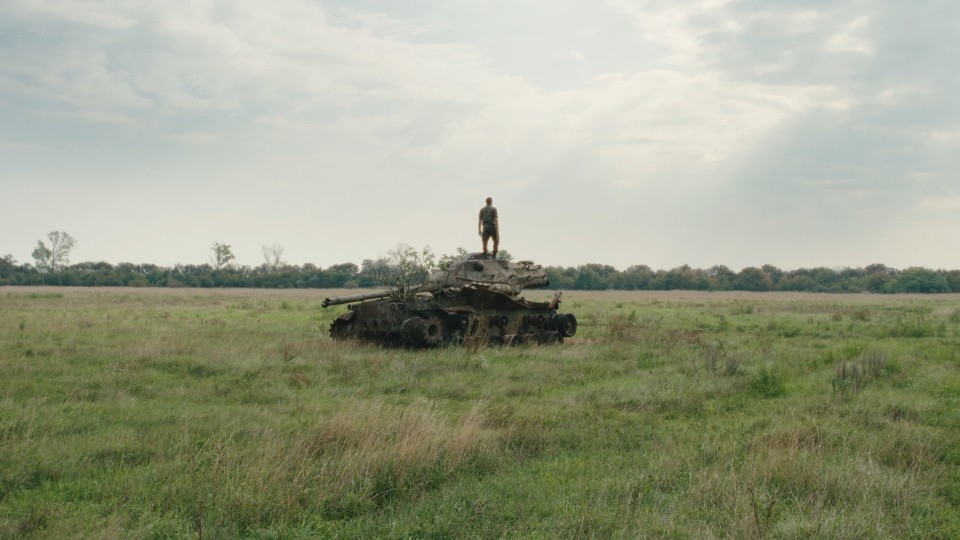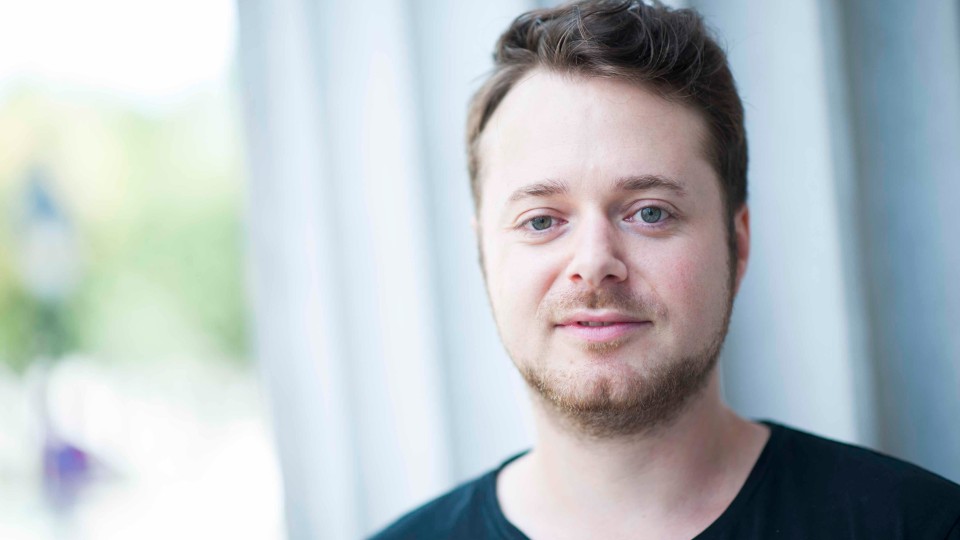Ahmet Simsek has lived his life in Austria since childhood. As a medic in the Austrian army, state champion in boxing, son
of a Turkish-Muslim family in Vienna, he could be tagged with several labels at once. But Jannis Lenz goes against common
expectations: in his portrait Soldier Ahmet he follows a multitalented young man who hasn't cried since he was twelve and had to learn early on to craft his own place.
The title Soldier Ahmet invites the viewer to step into the milieu of the military, a world associated with uniformity, the lack of individuality
and anonymity. But we quickly get to know your protagonist, Ahmet Simsek, as quite the opposite. Was it always your intention
to defy the viewers expectations?
JANNIS LENZ: Ahmet is someone who theoretically fits into many boxes: as a Turkish immigrant and as a Soldier. But he actively tries to
subvert these labels. I wanted to play with the viewer’s initial expectations, which are further put into perspective by Ahmet’s
position as a Muslim in the Austrian Federal Army. The title challenges the viewer to confront their own prejudices. We get
to know Ahmet as a real person and not as a fictional character who is easily classified.
How did you first meet Ahmet?
JANNIS LENZ: I met Ahmet in 2014, during the production of one of my first short films Schattenboxer. Despite him being an amateur actor, I casted him in the boxing club for the leading role. We got along really well and became
good friends. What was interesting to me, was that the closer we got, the more I forgot that Ahmet was a soldier in the federal
army. The idea to create a portrait of him came right after my son was born. Ahmet had come over to our place to get to know
our baby. He came directly from work and was wearing his full uniform. And there was this strange moment, when he was standing
in our flat, holding our little son in his arms, that there was a sudden clash in between the Ahmet I knew, and the image
I now had of him in uniform.
You also came up with the concept for the film. What elements of the film existed before shooting started? And how much did
you let yourself be led by Ahmet?
JANNIS LENZ: I always wanted to unify the different world’s Ahmet navigates in his everyday life, while at the same time providing space
for them to collide with one another. With this being our initial point of departure, the film’s concept and framework were
clear from very early on in the process and gave us something to keep coming back to during shooting. The film grew very organically
over a long period of time. Because Ahmet already had some experience on set, he knew how things worked and consciously incorporated
certain things that then fed into our collaborative process. I found it exciting that he too had an influence on the events
that took place in the film by offering us his own take on things. Dinner with Ahmet's parents is a good example of how we
often responded to things very spontaneously. Ahmet informed us on the same day that we could come over, and we then quickly
set up our team, without having any idea of what to expect from the scene. It was often like that. We let ourselves fall into
random situations and were rewarded for it again and again. That’s part of the reason why it was so important that our team
only consisted of 3-4 people. This constellation allowed us to react flexibly if something unexpected came up, but also gave
us enough room to quickly reschedule if we had to.
We observe Ahmet in both his professional and personal world, which largely revolves around boxing and theatre. Both are an
attempt to get to know the self and seem to be prompted by Ahmet’s desire to shed tears and an ambiguous pain he harbors deep
inside of him.
JANNIS LENZ: Ahmet once confided in me that he hasn’t cried since he was 12. This moment really touched me. A soldier and a professional
boxer who in his everyday life has to constantly prove how hardcore he is
wants to learn how to cry. In this sense, Ahmet’s
search for tears very naturally evolved into a central theme in the film, without us forcing it in any way. It’s a narrative
strand that interweaves all of Ahmet’s very different worlds and, in my eyes, poses the very important question of how emotions
are dealt with in each of the spaces he occupies. The theme of acting in the film explores Ahmet’s examination of himself
and his feelings, along with the different roles he has to slip into in his everyday personal life, the boxing club and his
professional world. He also has to uphold a certain image of masculinity that I wanted to question.
Ahmet’s worlds seem to have a relationship with the “stage”. In your observations of the military, you seem to enjoy emphasizing
it’s theatrical, rhythmic and choreographed components.
JANNIS LENZ: It’s true that the performative aspects embedded in the federal army interested me. The foot drills, for example, or the
different roles that individuals would embody once they entered the microcosmos of the barracks. Ahmet himself says that the
uniform transforms him into a different, stricter person. But the same uniform also allows him to submerge into a group –
to become one of many. I used music to place the performative elements in the federal army, the acting classes and the boxing
club in relationship to one another, whilst simultaneously emphasizing their stark differences. Choreography has always fascinated
me. I’ve created many projects that incorporated dance and performance art, mostly for museums and exhibitions. My transition
into filmmaking began when I started to film me and my friends doing Le parkour, a form of performance art in an urban environment,
that also possesses a lot of dance-like elements. My gaze naturally gravitates to these movements, and I love incorporating
them where people least expect it.
Ahmet’s story is also one of integration. One experiences his inner conflict – particularly when he places the Eid on the
flag of a country, that isn’t the country where his roots lie. Or maybe also just a mundane form of integration: Ahmet is
born in Austria and lives his life here like so many other individuals of whom no one ever talks about.
JANNIS LENZ: I feel like when the topic of integration is discussed, it’s always presented in between two extremes. Films very often feed
into these cliches, even if their intent is to do the opposite. I think it's really problematic when it's depicted as a matter
of making a choice between the two. For me it was about raising awareness on how hard Ahmet had to work to ‘be integrated’
and how he still has to prove himself on the subject every day. It’s an inner conflict that very clearly exists, and will
always exist, but simply becomes part of life. It can be really enriching to live in between two worlds. I think it becomes
problematic when it's depicted as a matter of making a choice between the two.
I always felt Ahmet’s strong desire to belong. It’s part of why he wears a uniform, and part of why he’s so skillful in adapting
to new situations. It’s something he had to learn from a very young age, in order to craft a place for himself.
The beginning and end of the film revolves around a Turkish and Viennese version of an old fable. A crocodile and a hyena
complain that their emotions, whether expressed in tears or in laughter, are never taken seriously. What is the meaning behind
this fable in context of the film?
JANNIS LENZ: The fable is about two animals that each, in their own way, express their emotions, but neither one of them feels taken seriously
by the other. I thought it was fitting for Ahmet, because he’s someone who never complains and instead tries to push past
the barriers that are thrown at him. Beyond this, the fable offers a very nice framework for the film, because I increasingly
saw Ahmet’s search for tears as a fairy tale. And I hope that this magical imagery that existed in my mind, managed to interweave
with the raw reality of Ahmet’s everyday life.
Interview: Karin Schiefer
March 2021
Translation: Ari Salazar






